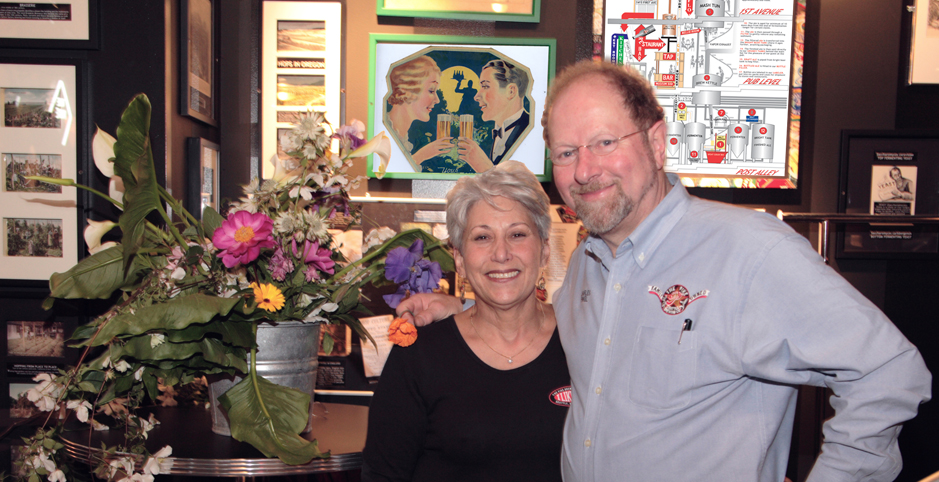I can’t remember when I wasn’t collecting something.
When our microbrew museum was announced as the winner for best local attraction, no one was more shocked than I was.
As soon as I learned to write, I wrote to English motorcar manufacturers requesting copies of their brochures. As a kid from Broken Arrow, OK, my shaky cursive probably revealed my inability to pay cash for an Alvis, Bentley or an Aston Martin Yet send they did their beautifully printed advertising and my collection grew. So did my knowledge.

As I matured, I favored the bodies of beautiful women to those of Pininfarina and Park Ward. I began to collect match covers. The most democratic of ephemera (free is a good price), these treasures reflect the culture, replete with sensual images, logos and even sculptured matches in the shape of bare beach babes and—importantly—beer bottles.
Those matchbooks—described, matted and framed, featuring beer-related motifs—now share space with collections of similarly-themed antique photographs, labels, posters, coasters, miniature bottles, giant bottles, embossed bottles, painted bottles, books, pins, neons, postcards, statues, trays, boxes, cartons, caps, openers, ashtrays, signs, decals, glasses, steins, illustrations, plates, plaques, etchings, lithographs, paintings, and everyday objects like lighters, pens, brushes, flashlights and portable radios shaped like a bottle or keg of beer.
The women in my life viewed my addiction in different ways. “What are you going to do with all that stuff?” I remember my mother saying. “Who cares about broomstick labels? Where are you going to put one more poster, your walls are covered!”
Rose Ann, who didn’t marry me for my matchbooks, has always supported my madness, knowing that the method also resulted in a valuable collection of 18th century furniture, paintings by minor masters, museum-quality porcelain and books galore.
While many of the objects that I have collected are valuable, that has not driven my quest. As I acquire, I do research, trying to determine the provenance of each object. From Lalique to labels, I study each piece of art. Collecting is an important part of my education; I also like being surrounded by beautiful and interesting objects.
At Pike Brewery, when we remodeled a large room on two levels and named it the Seattle Microbrew Museum, more than a few people suggested that it was an excuse to house my breweriana collection. The fact is that it is also good for business. In the museum, pub, and brewery, I use the collection to illustrate the fascinating story of eight thousand years of recorded beer history.
Alas, we don’t have a cuneiform tablet with a recipe for beer, said to be the oldest words ever printed; those are housed in the University of Pennsylvania Museum of Archeology. I was lucky enough to find two ancient coins, dating to 400 BC, embossed with barleycorns. They reveal the transition from payment for goods and services in barley and beer to modern money. An ancient sculpture depicts an Egyptian lady grinding malt. An early ecclesiastical manuscript, hand-lettered and illustrated, tells a tale of beer and the church. Antique etchings depict alewives opening their homes to the public, setting the stage for the public house or pub.
Shadow boxes housing scores of post-Prohibition tap handles were the gift of a customer. Her dad, a beer truck driver in New Jersey, collected them all of his adult life. Her kind gesture of gifting them to the museum so that many people could enjoy them, rather than let then collect dust in her attic, is not unusual.
Not all items are antique, though most are. Among my favorites is a Czech blanc de chine statue of King Gambrinus, an object as ubiquitous to 19th and 20th century breweries as statues of The Virgin Mary is to the corner church.
Early sepia tone photos of brewery workers, hop pickers and people enjoying beer are a peek in the past, asking many more questions than they reveal.
Across the street from our brewery is SAM (The Seattle Art Museum), currently featuring an exhibit of paintings by the French Impressionists. The museum, along with other public attractions, was recently put on a ballot to be voted on by readers of N.W. Source, the on-line guide of The Seattle Times and PI. When our microbrew museum was announced as the winner for best local attraction, no one was more shocked than I was. How can you compare a set of Greisdieck matchbooks to a Monet? The mystery of collecting is not easy to explain, especially to your mom!









